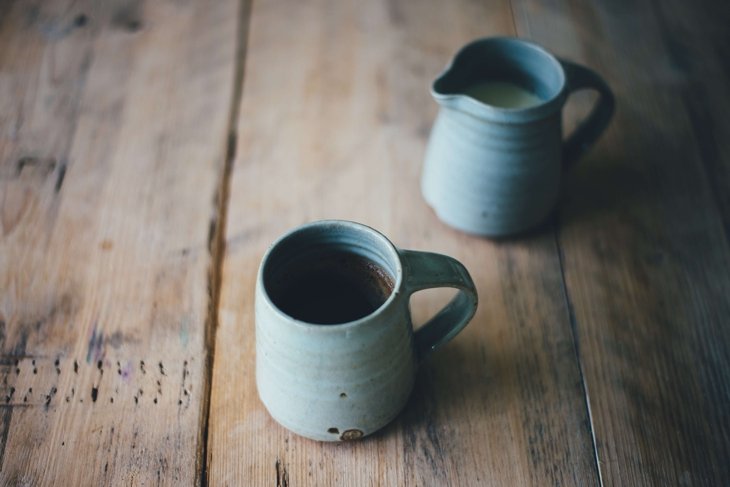
After learning she could no longer consume gluten or dairy, Shari Regan overhauled her diet. While searching for healthy recipes, she discovered bone broth.
Although the concept of bone broth is nothing new—its origins can be logically traced back to prehistoric times—it’s garnering renewed attention, thanks to the popular paleo diet, which mandates eating only foods that were available when early humans hunted and gathered.
Regan began making bone broth regularly, drinking it straight and adding it to recipes. When her husband felt like skipping breakfast, she’d convince him to drink some, too. Then he started requesting it, saying it kept him satiated until lunchtime.
Although they were drinking bone broth primarily for the boost of protein, vitamins, minerals, and essential fatty acids, Regan soon noticed an unexpected, but welcome, side effect. Her 62-year-old husband, who had spent most of his life working outdoors in all kinds of Ohio weather, suddenly looked younger.
“His skin had always looked very weathered,” she says. “But in just a few months of drinking bone broth, it was smoother, with fewer wrinkles.”
Bone broth benefits
The name “bone broth” is a little confusing. Because it’s made primarily from animal bones, it’s technically a stock, not a broth, the latter being made with actual meat.
But those who embrace the bone broth movement aren’t confused one bit about the benefits they say they’re getting: improved immunity and metabolism, stronger bones, protected joints, reduced inflammation, and enhanced skin tone.
Those benefits, they maintain, are thanks to bone broth’s high levels of collagen; essential minerals such as calcium, magnesium, potassium, and phosphorus; and amino acids glycine and proline.
Devotees attribute bone broth’s skin-smoothing powers mainly to the collagen, a protein that works like a “glue,” holding our bones and muscles together, protecting our joints and organs, and helping to preserve our gut lining.
Although our bodies make collagen naturally, production decreases as we age. We make 1 percent less every year starting around our mid-twenties, and women lose even more after menopause.
External factors such as smoking or sun damage also hamper collagen production. With less collagen, our skin dries out, loses its elasticity, and becomes wrinkled.
How is bone broth made?
To make bone broth, animal bones, cartilage, tendons, and connective tissue are simmered in water for several hours, and sometimes up to 48 hours. The long cooking process draws out the nutrients. A small amount of acid, such as apple cider vinegar, is added to further help extract these nutrients, which are more plentiful in the bones than in boneless meat.
5 Tips for DIY bone broth
- Use bones from animals raised organically to avoid possible pesticide or antibiotic residue.
- Stockpile bones and other scraps in the freezer until ready to use, then thaw at room temperature for an hour.
- Try simmering bones and scraps in a reusable muslin brew bag to eliminate the straining process.
- Make bone broth in a heavy stockpot, slow cooker, pressure cooker, or Instant Pot.
- Avoid adding salt to bone broth while it simmers; season when your broth is used in another recipe or served as a drink.
What’s a vegan to do?
Since it’s impossible to make bone broth without animal bones, there’s technically no such thing as meatless bone broth. Veggie-laden vegan alternatives pack a powerful nutritional punch, but they’re not bone broth.
The body’s collagen-making process requires that amino acids from protein-rich foods work together with vitamins and minerals such as vitamin C, zinc, and copper. So, to stimulate the production of collagen, it’s important to choose foods that contain a variety of these vitamins and minerals.
| Nutrients | Food sources |
| Vitamin c | citrus fruits; kiwis; red, yellow, and green peppers |
| zinc | pumpkin seeds, chickpeas, kidney beans, wheat germ |
| copper | sesame seeds, potatoes, shiitake mushrooms |
| calcium | tofu, kale, spinach, tahini |
| magnesium | pumpkin seeds, almonds, edamame, legumes |
| glycine | seaweed (spirulina), spinach, cauliflower |
To develop more flavour, some recipes suggest roasting the bones first and/or adding pepper, onion, garlic, and spices to the simmering broth. The solid particles are then strained out, and bone broth can be sipped as is or added to other dishes.
Does it really work?
Not everyone is convinced about bone broth’s benefits; there’s no scientific evidence to support the claim that dietary collagen gets absorbed properly by the body and heads straight for the skin and joints.
To be fair, a comprehensive research study would be difficult to achieve, since no two batches of bone broth could ever be identical, due to the infinite combinations of animal parts used, the acid and spices added, even differences in the water it all simmers in.
But that doesn’t sway bone broth fans such as Donna Branch of Chicago. Even if it doesn’t work exactly the way they say, the rich, warm liquid soothes her on cold days, fills her up so she doesn’t overeat, and makes her happy when she looks in the mirror.
“I’ve gotten compliments lately that my skin is glowing,” she says. “I just know it’s the bone broth, and I’ll keep drinking it every day.”
Lisa Truesdale is a full-time freelance writer based in Colorado. She writes for dozens of publications on topics such as healthy living, food and drink, and travel and tourism.
































